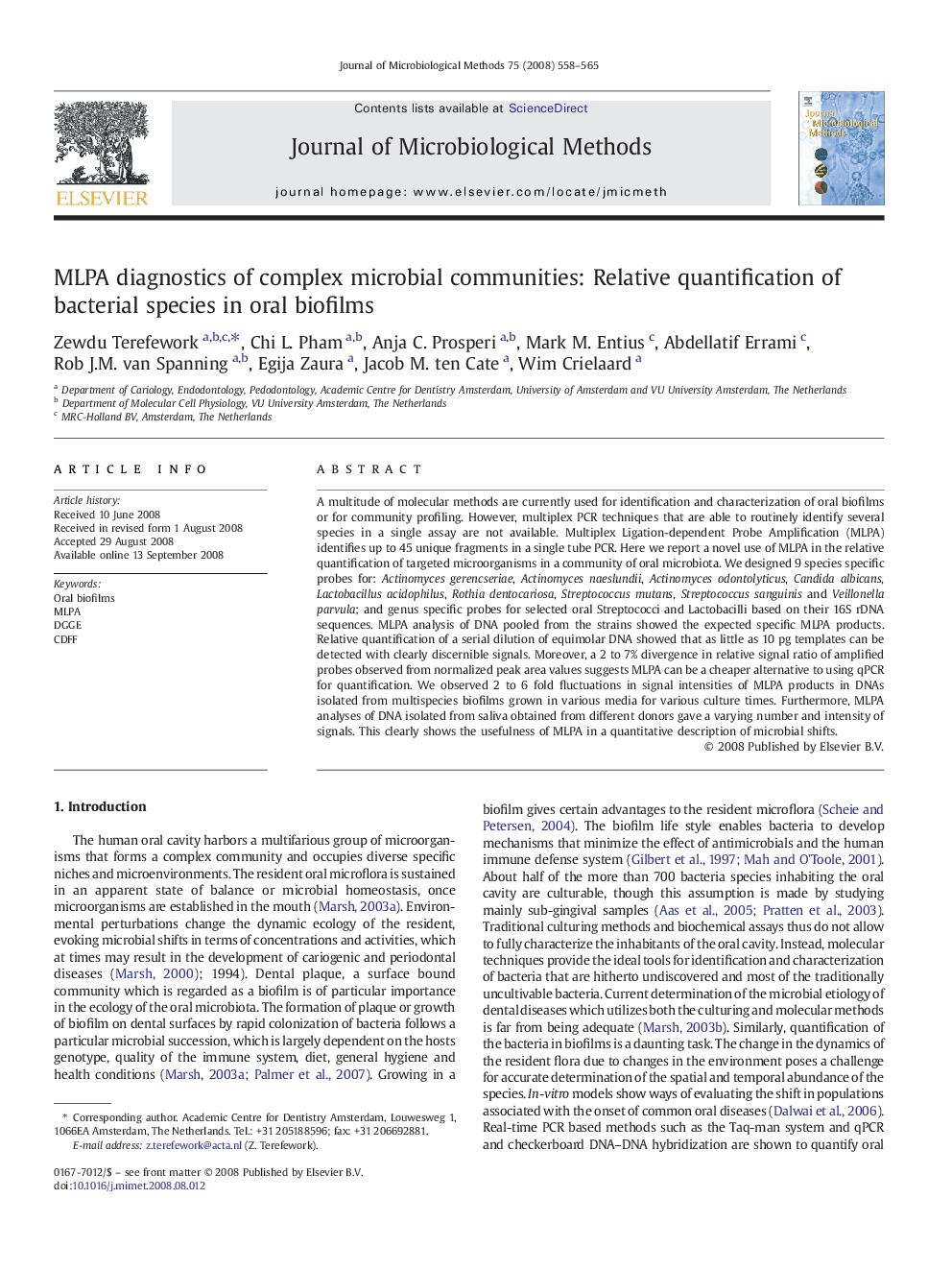| Article ID | Journal | Published Year | Pages | File Type |
|---|---|---|---|---|
| 2090924 | Journal of Microbiological Methods | 2008 | 8 Pages |
A multitude of molecular methods are currently used for identification and characterization of oral biofilms or for community profiling. However, multiplex PCR techniques that are able to routinely identify several species in a single assay are not available. Multiplex Ligation-dependent Probe Amplification (MLPA) identifies up to 45 unique fragments in a single tube PCR. Here we report a novel use of MLPA in the relative quantification of targeted microorganisms in a community of oral microbiota. We designed 9 species specific probes for: Actinomyces gerencseriae, Actinomyces naeslundii, Actinomyces odontolyticus, Candida albicans, Lactobacillus acidophilus, Rothia dentocariosa, Streptococcus mutans, Streptococcus sanguinis and Veillonella parvula; and genus specific probes for selected oral Streptococci and Lactobacilli based on their 16S rDNA sequences. MLPA analysis of DNA pooled from the strains showed the expected specific MLPA products. Relative quantification of a serial dilution of equimolar DNA showed that as little as 10 pg templates can be detected with clearly discernible signals. Moreover, a 2 to 7% divergence in relative signal ratio of amplified probes observed from normalized peak area values suggests MLPA can be a cheaper alternative to using qPCR for quantification. We observed 2 to 6 fold fluctuations in signal intensities of MLPA products in DNAs isolated from multispecies biofilms grown in various media for various culture times. Furthermore, MLPA analyses of DNA isolated from saliva obtained from different donors gave a varying number and intensity of signals. This clearly shows the usefulness of MLPA in a quantitative description of microbial shifts.
